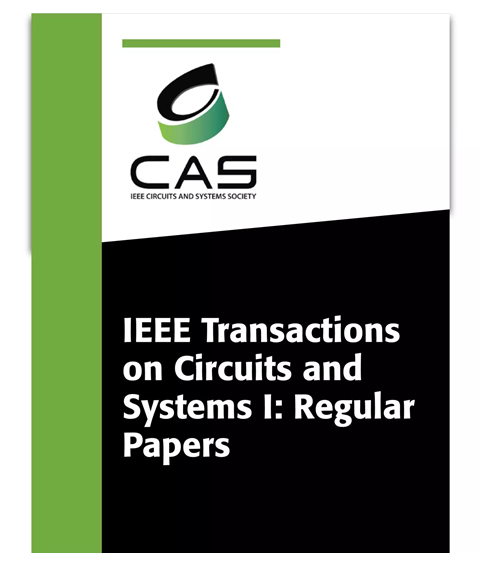平衡 CMOS 兼容型三元 Memristor-NMOS 逻辑系列及其应用
IF 5.2
1区 工程技术
Q1 ENGINEERING, ELECTRICAL & ELECTRONIC
IEEE Transactions on Circuits and Systems I: Regular Papers
Pub Date : 2024-08-19
DOI:10.1109/TCSI.2024.3441852
引用次数: 0
摘要
介绍了基于忆阻器和 MOSFET 器件的平衡三元数字逻辑电路。首先,设计了平衡三元最小门 TMIN、最大门 TMAX 和三元反相器,并进行了仿真验证。接着,利用这三个基本门设计了三元编码器、解码器和多路复用器等逻辑电路。为了进一步验证,使用内部制造的忆阻器和 MOS 晶体管成功地实现了一个三元 3-1 编码器。我们介绍了两种不同的设计方法,即基于解码器的方法和基于多路复用器的方法,并将其应用于实现组合逻辑电路,如平衡三元半梯形、乘法器和数字比较器。我们利用 50nm CMOS 技术参数和 BSIM 模型对电路进行了仿真,并从功耗和元器件数量的角度对两种设计方法进行了比较和分析,从而为后续集成多值逻辑电路的研究和开发提供指导。基于解码器的方法在元件数量和功耗方面都具有优势,而基于多路复用器的方法则具有工作原理简单、易于实现等优点。本文章由计算机程序翻译,如有差异,请以英文原文为准。
A Balanced CMOS Compatible Ternary Memristor-NMOS Logic Family and Its Application
Balanced ternary digital logic circuits based on memristors and MOSFET devices are introduced. First, balanced ternary minimum gate TMIN, maximum gate TMAX and ternary inverters are designed and verified by simulation. Next, logic circuits such as ternary encoders, decoders and multiplexers are designed using these three basic gates. For further validation, a ternary 3–1 encoder was hardware-implemented successfully using in-house fabricated memristors and MOS transistors. Two different design approaches, namely the decoder-based method and the multiplexer-based method are introduced and applied to realize combinational logic circuits such as balanced ternary half-adder, multiplier, and numerical comparator. We simulate the circuits using 50nm CMOS technology parameters and BSIM models and present comparisons and analyses of the two design methods in view of the power consumption and component device counts, which can guide subsequent research and development of integrated multi-valued logic circuits. The decoder-based method has advantages both in terms of component numbers and power consumption, but the multiplexer-based method has the advantages of being based on a simple operating principle and ease of implementation.
求助全文
通过发布文献求助,成功后即可免费获取论文全文。
去求助
来源期刊
CiteScore
9.80
自引率
11.80%
发文量
441
审稿时长
2 months
期刊介绍:
TCAS I publishes regular papers in the field specified by the theory, analysis, design, and practical implementations of circuits, and the application of circuit techniques to systems and to signal processing. Included is the whole spectrum from basic scientific theory to industrial applications. The field of interest covered includes: - Circuits: Analog, Digital and Mixed Signal Circuits and Systems - Nonlinear Circuits and Systems, Integrated Sensors, MEMS and Systems on Chip, Nanoscale Circuits and Systems, Optoelectronic - Circuits and Systems, Power Electronics and Systems - Software for Analog-and-Logic Circuits and Systems - Control aspects of Circuits and Systems.

 求助内容:
求助内容: 应助结果提醒方式:
应助结果提醒方式:


